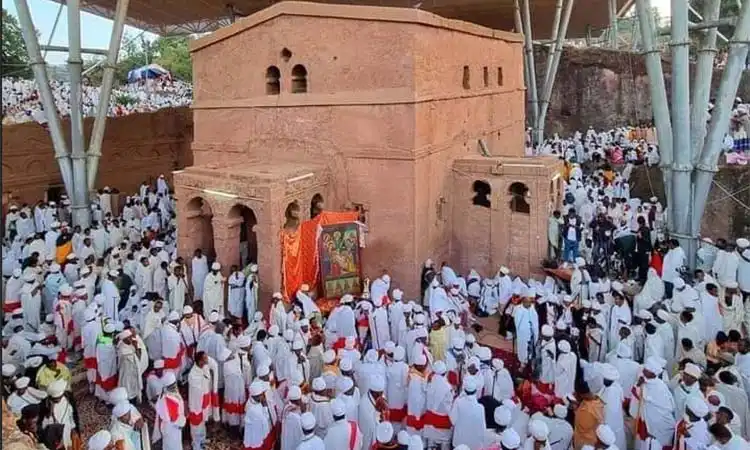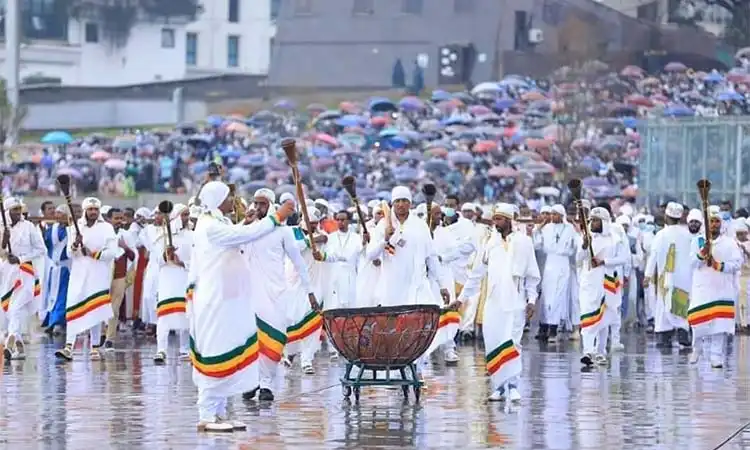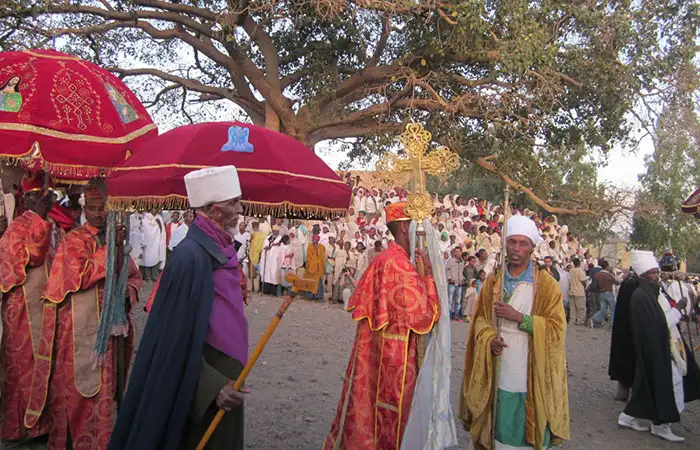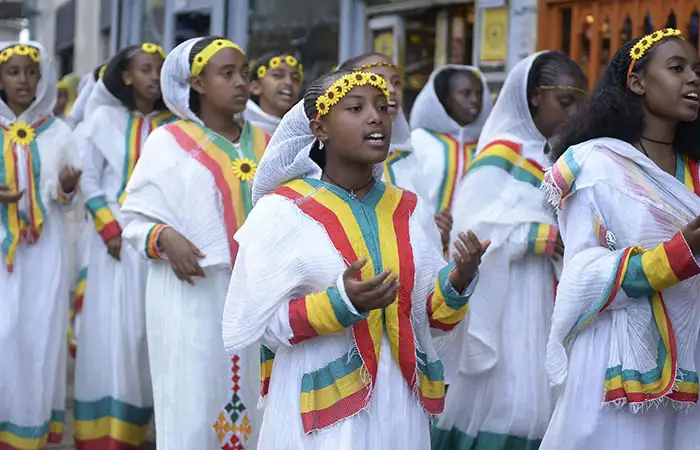Festivals In Ethiopia
Meskel (September 26-27): the finding of the true cross (Addis Ababa, Aksum, Graugie Region) many religious leaders and choirs from various churches in the city will gather. In the evening, the tall “Damera” bonfire is lit to commemorate the discovery of the cross up on which Jesus was crucified.
Hidar Tsion is the holiday of St Marry of Tsion, celebrated (November 29/30) commemorates the entry of the Ark into Abyssinian highlands. And the coronation day of the first Christian Kings Ezana and Sazana. The holiday of St Maryam of Tsion is accompanied with great and honorable singings and traditional dancing. Thousands of Pilgrims travel to Aksum from all over the country.
Gena (January 7th): the birth of Jesus ( Lallibela) pilgrims travel to Lallibela for two reasons. Celebrate Christmas and the birthday of the former King Lallibela. This is unique spectacle given the various view points of watching the unique formations of priest’s ceremony from the ledges of the rock hewn churches.
Timket (January 19th): Ethiopia’s most celebrated festival. Commemorates the baptism of Jesus Christ in the water of river Jordan, the Ark of the Covenant is removed from its chapel with many people attending it. The following morning the church officials assemble around the Tabot and sprinkle holy water over all faithful present and receive the renewals of their vow.
Hosa’na (Palm Sunday) in Aksum celebrated one week before Easter and commemorates the triumphal entry of Jesus Christ and his disciples into Jerusalem. During the procession, people lay branches of palm and green grass on the street and accompany the procession, the priests are followed by a donkey and foal wearing decorated linen cloths. This symbolizes the entry of Jesus Christ into Jerusalem riding a donkey.
Fasika (Ethiopian Easter) dates changes every Year. A fascinating all night prayer vigil is available at all orthodox churches. Addis Ababa Holy Trinity, Aksum, and Lallibela churches are particularly special.
Mihila (Mehelela) is a nocturne procession which takes place on the first 7 days of every month, followed by hundreds of believers: originally it is a special prayer used to ask for special mercy in difficult times, but in Aksum it became a regular practice, where priests carry replica of the Ark of the Covenant (Tabot) during procession – giving the chance to appreciate all the fascination of Ethiopian spirituality.
The Tabot is the holiest object in Orthodox liturgy, symbolizing the Ark of the Covenant said to have been brought to Ethiopia by Menelik I. Normally kept in the Sancta Sanctorum, the Tabot is revealed only during major celebrations. The priest who carries it must undergo days of fasting and walks only on a carpet to preserve its sanctity.




